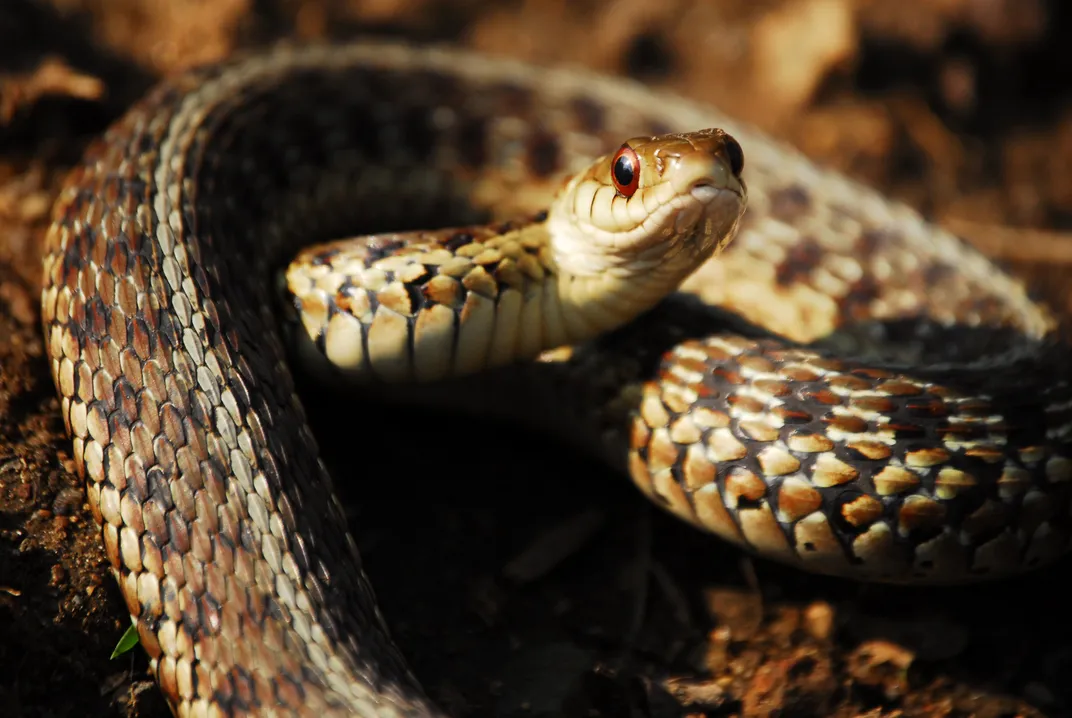Venomous snakes have earned their fearsome reputation, but not every threatening display indicates an imminent strike. Many snake species, both venomous and non-venomous, use elaborate bluffing behaviors to deter potential threats without resorting to biting. Understanding the difference between genuine aggression and defensive bluffing can be crucial knowledge for outdoor enthusiasts, homeowners in snake-prone areas, and wildlife observers. This article explores the fascinating world of snake behavior, focusing specifically on how to recognize when a venomous snake is putting on a show rather than preparing to strike.
Understanding Snake Defense Mechanisms
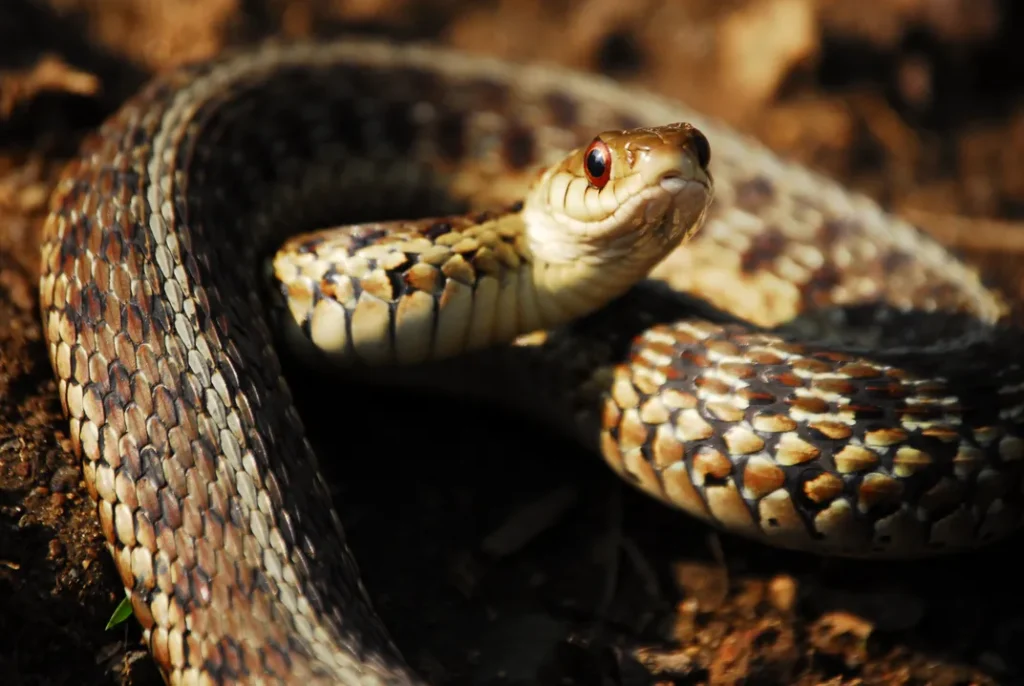
Snakes, as predators that lack limbs, are inherently vulnerable to larger animals and humans, making defensive behaviors essential to their survival. When threatened, snakes employ a sophisticated range of tactics designed to intimidate potential predators before resorting to biting, which expends valuable energy and venom. These defensive displays have evolved over millions of years as effective deterrents that allow snakes to avoid dangerous confrontations. Understanding that most snake behaviors are defensive rather than offensive is the first step in recognizing bluffing behaviors versus genuine threats. Even venomous species generally prefer to avoid conflict, using their venom primarily for hunting prey rather than defense.
The Body Language of Bluffing
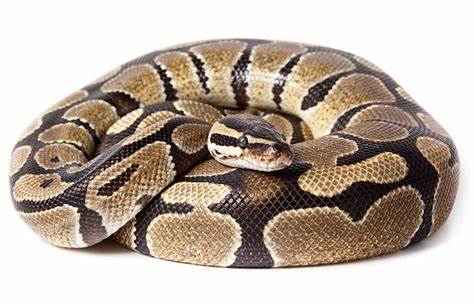
A bluffing venomous snake often exhibits exaggerated body positioning designed to make it appear larger and more threatening. These postures typically include flattening the neck (particularly pronounced in cobras and some vipers), raising the front portion of the body off the ground in an S-shape, and puffing up to increase apparent size. The snake may maintain a greater distance than necessary if merely bluffing, as genuine strike preparation usually involves coiling tightly with the head positioned centrally. Some species like rattlesnakes may shake their tails vigorously as a warning, even when they have no intention of striking. This body language is primarily intimidation-focused rather than attack-oriented, giving you valuable visual cues about the snake’s intentions.
Distinguishing Between Dry Strikes and Venom Injection
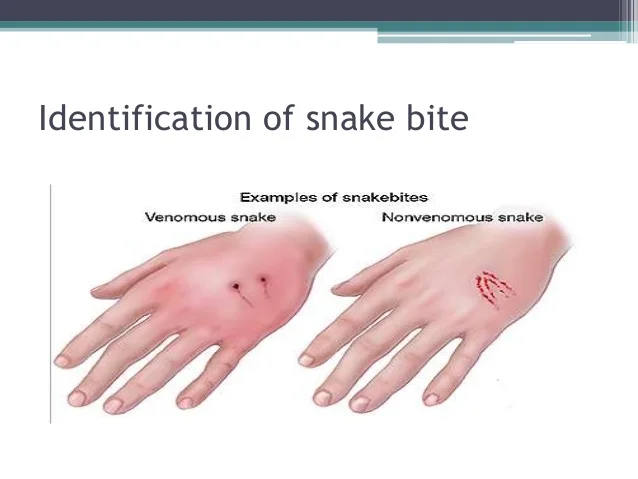
One of the most significant bluffing behaviors in venomous snakes is the dry strike, where they lunge forward with closed fangs or deliberately miss their target. Venomous snakes can control their venom delivery, and studies suggest they may withhold venom in approximately 25% of defensive bites, conserving this metabolically expensive resource. These dry strikes serve as serious warnings without depleting venom reserves needed for hunting. You can sometimes identify a potential dry strike by the snake’s movement pattern – a true venomous strike tends to be lightning-fast and precisely aimed, while bluff strikes may be more telegraphed and deliberately miss their mark. However, this distinction should never be tested intentionally, as even a dry strike can cause injury, and there’s no guaranteed way to predict venom control beforehand.
Rattlesnake Warning Systems
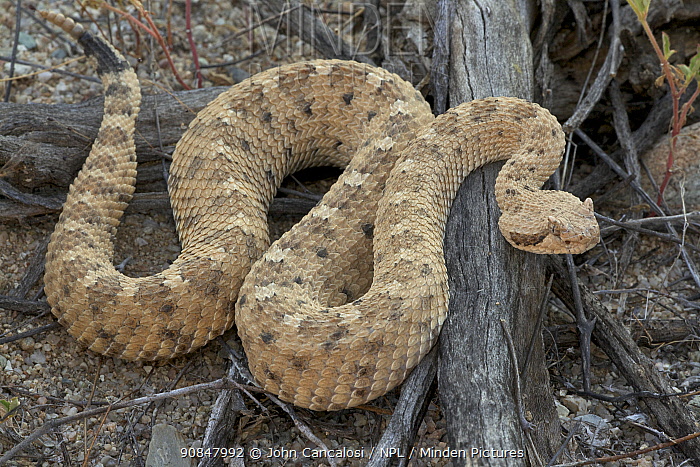
Rattlesnakes possess one of nature’s most recognizable warning systems – the iconic rattle that gives them their name. This specialized adaptation allows the snake to communicate potential danger without having to strike. A rattlesnake that’s actively rattling is actually displaying remarkably considerate behavior, essentially announcing its presence and giving you time to retreat safely. The intensity and duration of rattling can provide clues about the snake’s state of mind; intermittent, softer rattling often indicates a snake that’s uncertain and would prefer to be left alone rather than forced to defend itself. Continuous, loud rattling combined with a coiled posture suggests a more imminent strike possibility. Interestingly, some rattlesnakes may rattle more persistently when bluffing precisely because they’re hoping to avoid a physical confrontation.
Hissing and Vocal Warnings
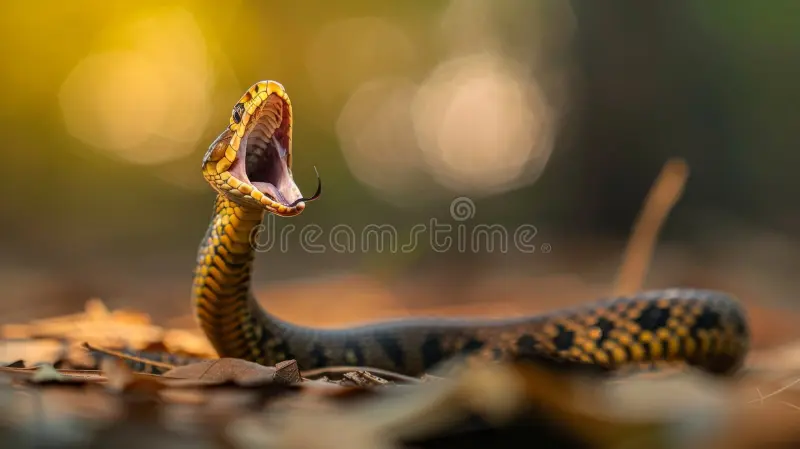
Many venomous snakes employ hissing as a primary warning signal, creating an intimidating sound by forcefully expelling air through their glottis. This behavior is particularly common in vipers, cobras, and many pit vipers, serving as an audible boundary-setting mechanism. A snake that’s investing energy in creating loud, sustained hissing is typically trying to scare you away rather than preparing for an immediate strike. The volume and persistence of hissing often correlate with the level of perceived threat – louder, more continuous hissing generally indicates a snake that feels severely threatened but is still hoping to avoid physical confrontation. Some species like the hognose snake take this behavior to theatrical extremes, hissing dramatically while flattening their heads to mimic more dangerous species, despite being relatively harmless themselves.
False Striking and Mock Charges
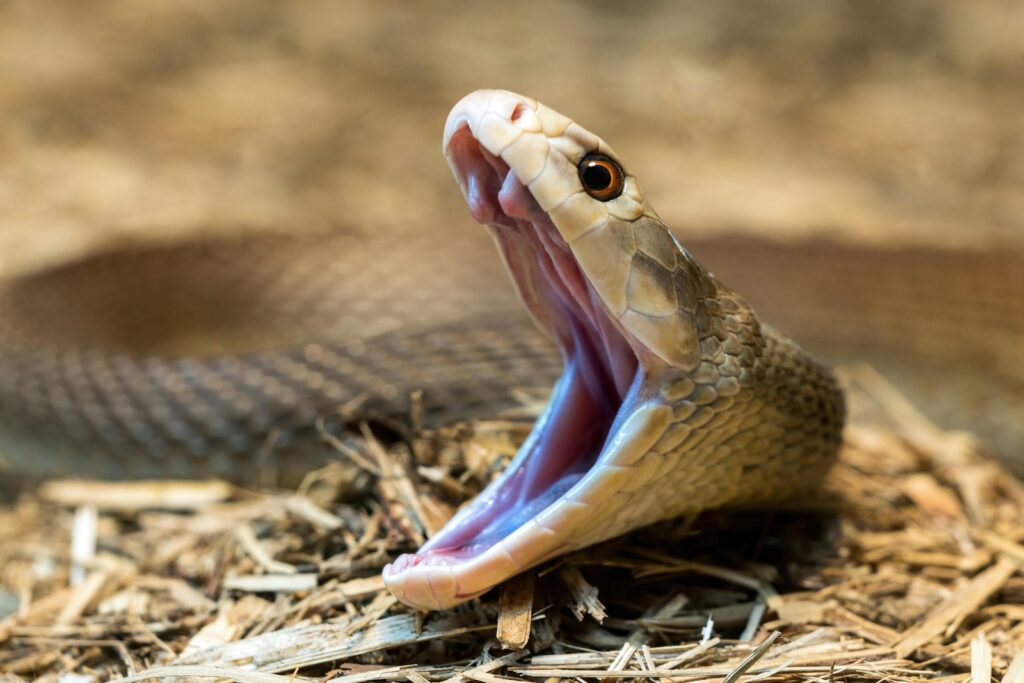
False strikes represent one of the most convincing bluffing behaviors in the snake world, where the animal makes a forward-lunging motion without actually intending to make contact. These mock charges serve as serious warnings, essentially communicating “Next time, I won’t miss.” You can sometimes identify a false strike by its trajectory – a genuine strike is typically aimed precisely at the perceived threat, while a false strike may be deliberately off-target or fall short. Some species like cottonmouths are particularly known for these intimidation displays, making threatening advances that stop short of actual contact. The snake may repeat this behavior multiple times, especially if the threat (you) doesn’t retreat, gradually escalating its defensive display before resorting to actual biting.
Head-Faking and Feinting Behaviors
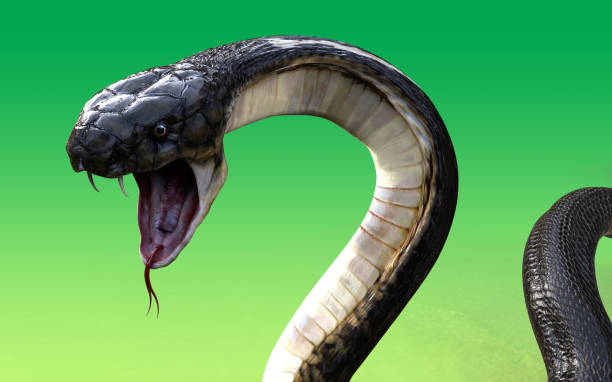
Closely related to false striking, many venomous snakes engage in sophisticated feinting behaviors to confuse potential threats. These head-fakes involve quick, jerky movements of the head in various directions, creating the impression of unpredictable striking potential. This behavior serves multiple purposes: it makes the snake harder to capture, creates uncertainty about its next move, and projects an aura of dangerous unpredictability. Cobras are particularly adept at this tactic, combining it with hood displays to create a compelling defensive presence. The timing and rhythm of these movements can provide clues – erratic, seemingly random head movements often indicate a bluffing snake trying to appear more dangerous, while a fixed, focused gaze with minimal movement may signal genuine strike preparation.
Tail Displays and Mimicry
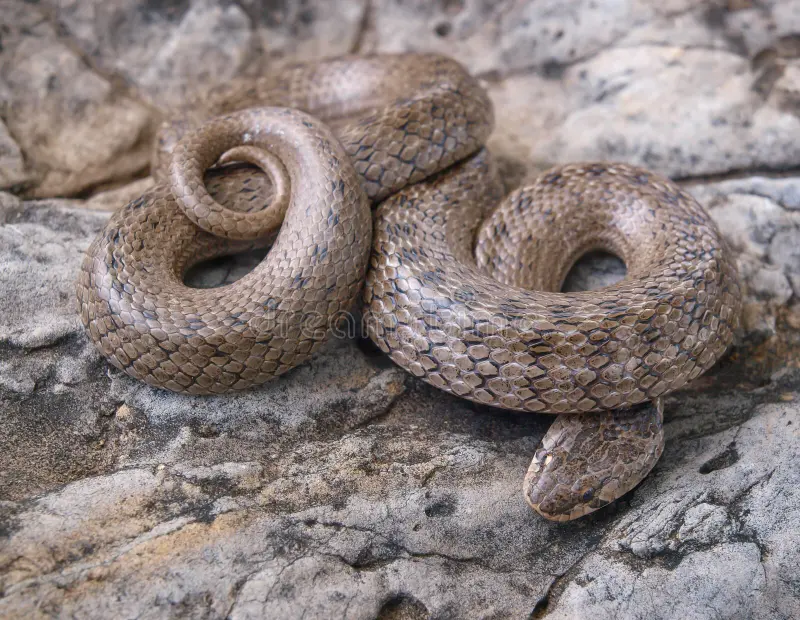
Several venomous snake species engage in fascinating tail-based bluffing behaviors to redirect attention away from their vulnerable heads. Copperheads and some other pit vipers may vibrate their tails against leaves or dry ground, creating a sound remarkably similar to a rattlesnake despite lacking actual rattles. This acoustic mimicry leverages the widespread recognition of the rattlesnake warning to benefit species without rattles. Other species may exhibit caudal luring, where they wiggle their tails to mimic worms or insects, though this is primarily a hunting rather than a defensive tactic. Some snakes like the eastern indigo even display their tails prominently while hiding their heads, sacrificing a less vital body part if a predator attacks. These diverse tail-based behaviors represent sophisticated evolutionary adaptations that help snakes avoid dangerous confrontations.
Defensive Posturing of Cobras and Hood Displays
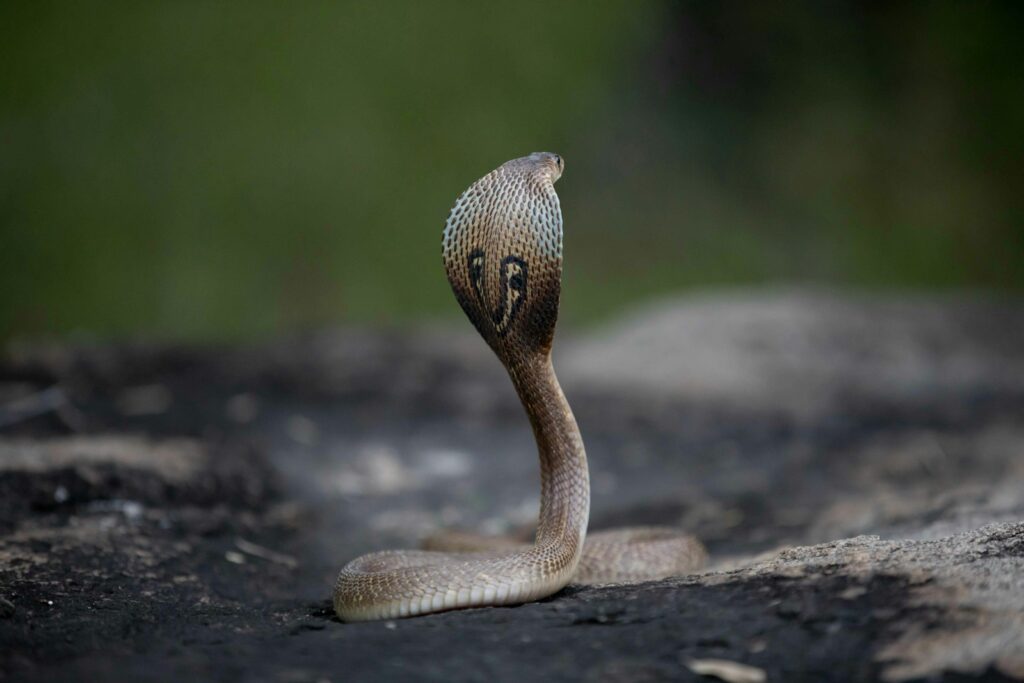
The cobra’s iconic hood display represents perhaps the most famous bluffing behavior in the snake world, instantly recognizable even to people with limited snake knowledge. When threatened, cobras and some related species spread their neck ribs laterally, creating an impressive hood that dramatically increases their apparent size. This display is almost entirely bluff-oriented, designed to make the snake appear more formidable without requiring a strike. The hood display is typically accompanied by a raised body posture, with the snake elevating the front third of its body off the ground in a vertical stance. While undeniably intimidating, a hooding cobra is actually communicating its desire to avoid conflict – the display essentially says “Stay back” rather than “I’m attacking.” The duration of hood maintenance can provide clues about the snake’s intentions – a persistently hooded cobra that holds its ground is usually hoping intimidation alone will resolve the situation.
Death-Feigning and Dramatic Displays
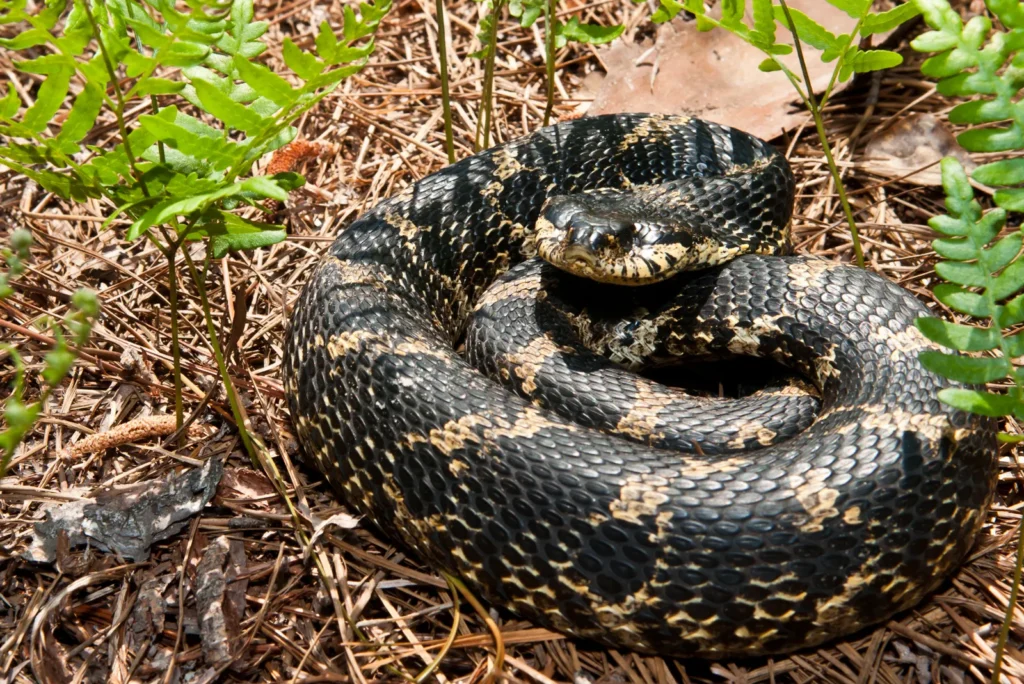
Some venomous snakes take bluffing to theatrical extremes by playing dead when severely threatened, a behavior known as thanatosis. While this behavior is most famous in the non-venomous hognose snake, certain venomous species like some coral snakes may also employ this tactic. The snake may roll onto its back, go limp, and even emit foul-smelling musk from specialized glands to complete the illusion of death. This represents the ultimate bluff – a last-resort tactic when intimidation displays have failed to deter a persistent threat. Unlike more aggressive displays, death-feigning indicates a snake that has given up on active defense and is hoping to be overlooked entirely. The behavior can be remarkably convincing, with some snakes remaining “dead” for extended periods until they perceive the threat has passed.
Environmental Context and Behavior Interpretation
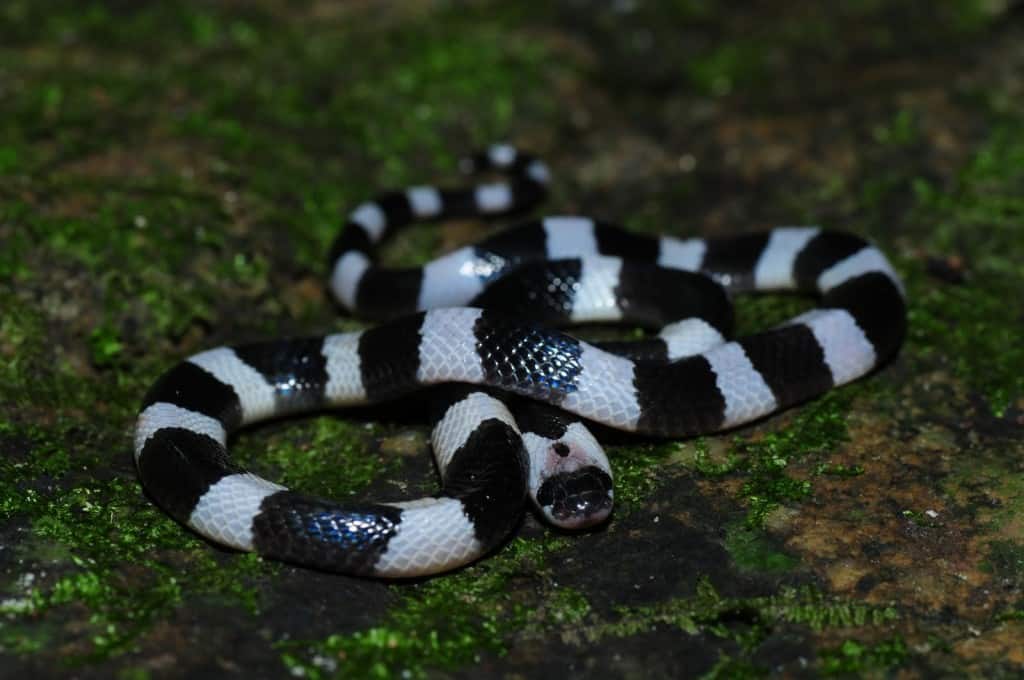
The environmental context provides essential clues for interpreting whether a snake’s threatening behavior represents genuine aggression or elaborate bluffing. Snakes encountered on trails or open areas typically display more dramatic bluffing behaviors because they feel exposed and vulnerable, lacking immediate escape options. Conversely, a snake cornered in a confined space like a garage or woodpile may exhibit less bluffing and more genuine defensive readiness. Seasonal factors also influence bluffing probability – snakes are generally more defensive and less likely to bluff during breeding season or after recent feeding when they’re slower and more vulnerable. Temperature plays a crucial role too, as snakes are ectothermic; on cool mornings they may lack the energy for sustained strikes and rely more heavily on intimidation displays until they warm up.
Species-Specific Bluffing Behaviors
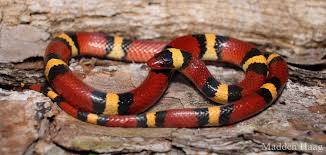
Different venomous snake species have evolved distinctive bluffing strategies based on their habitats, physical capabilities, and evolutionary history. Rattlesnakes primarily rely on their audible warning system, often rattling persistently while maintaining distance from the perceived threat. Cottonmouths are known for their “gaping” display, where they open their mouths wide to reveal the white lining that gives them their name, often while vibrating their tails and releasing a musky odor. Coral snakes, despite their potent venom, are relatively shy and may respond to threats by hiding their heads while elevating and wiggling their tails, drawing attention away from their more vulnerable parts. Eastern diamondback rattlesnakes combine loud rattling with an S-shaped posture and may maintain this standoff for extended periods without striking if given sufficient space. Understanding these species-specific behaviors can help determine the seriousness of the threat in any given encounter.
Safe Response to Potential Bluffing
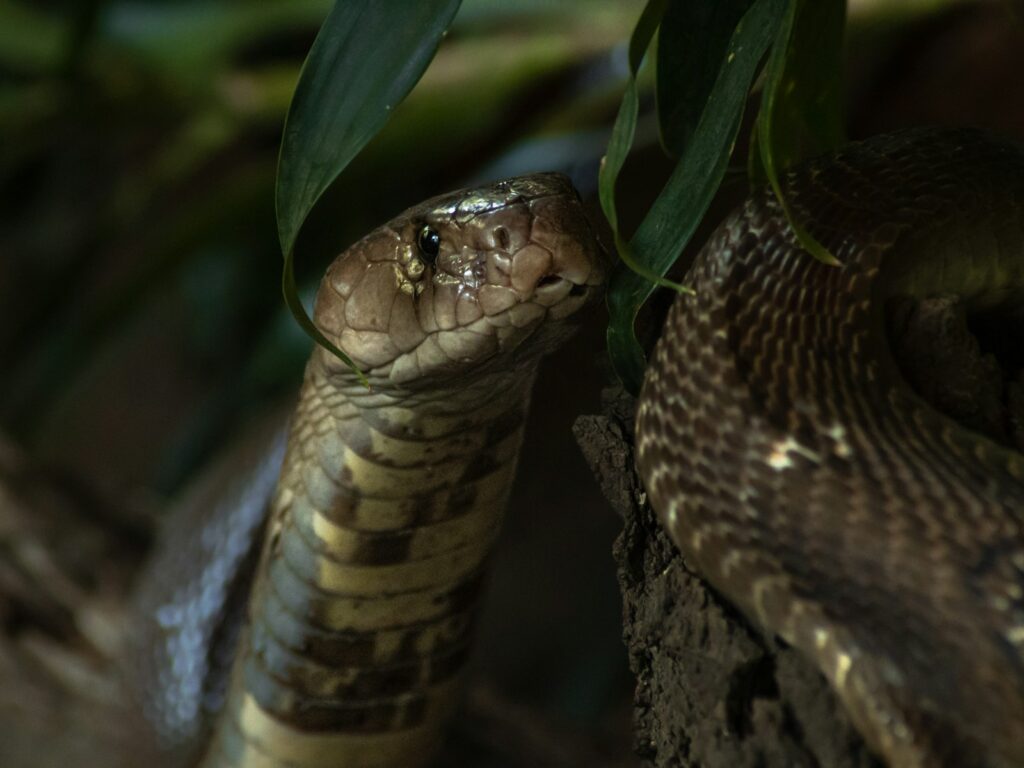
When encountering a venomous snake displaying possible bluffing behavior, the safest response is always to give the animal ample space and a clear escape route. Regardless of whether a snake is bluffing or genuinely preparing to strike, attempting to handle, capture, or kill it dramatically increases bite risk. Maintain a minimum distance of at least twice the snake’s body length, as most species cannot strike farther than half their length. If you must move past the snake, take a wide detour around it, moving slowly and deliberately without making sudden movements that might trigger a defensive response. Remember that the snake’s goal is almost always to escape rather than to attack, so allowing it that opportunity represents the safest strategy for both parties. If retreat isn’t immediately possible, stand still until the snake moves away, as most defensive displays will subside if the snake no longer perceives an immediate threat.
When Bluffs Turn to Genuine Threats
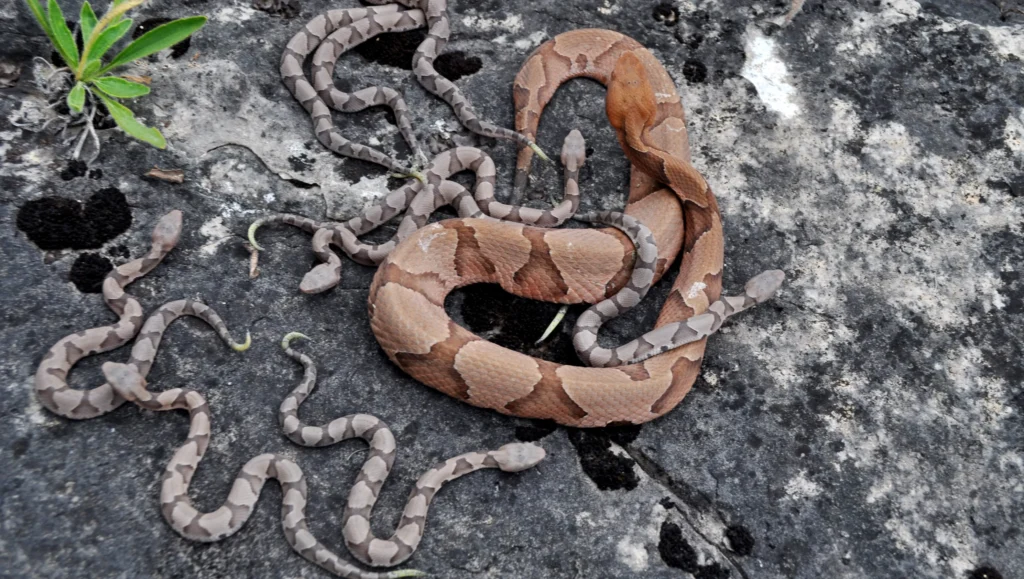
Understanding the progression from bluffing to genuine striking intent can help you recognize when a situation has become truly dangerous. A snake that transitions from general defensive displays to focused attention with a fixed gaze is showing signs of escalating beyond bluffing. Look for a tightly coiled body position with the head centered and neck formed into an S-shape, ready to launch forward – this compact posture typically precedes actual strikes rather than intimidation displays. Cessation of warning signals can be particularly concerning; a rattlesnake that suddenly stops rattling while maintaining its coiled position may be shifting from warning to striking mode. Repeated harassment or blocking a snake’s escape routes will almost always cause bluffing to escalate into genuine defensive strikes, as the animal perceives no alternative for self-preservation. The transition from bluffing to striking can happen in seconds, which is why maintaining a safe distance remains crucial even when a snake appears to be merely intimidating.
Venomous snakes possess a remarkable repertoire of bluffing behaviors that serve as their first line of defense, allowing them to deter threats without expending valuable venom or risking injury. From the dramatic hood displays of cobras to the iconic warning rattle of rattlesnakes, these behaviors represent sophisticated evolutionary adaptations that benefit both snakes and the creatures they encounter. While distinguishing between bluffing and genuine strike preparation can provide fascinating insights into snake behavior, the most important takeaway is that all defensive displays should be respected by maintaining a safe distance. Understanding that most snakes strongly prefer to avoid confrontation can foster greater appreciation for these often misunderstood animals while promoting safer interactions when our paths cross in the wild.

